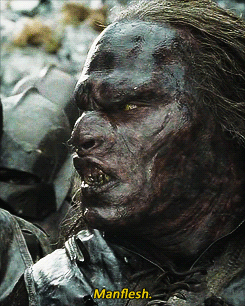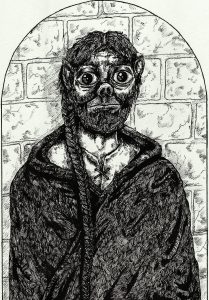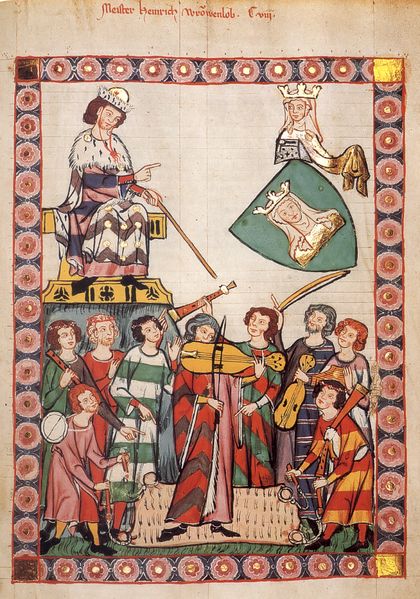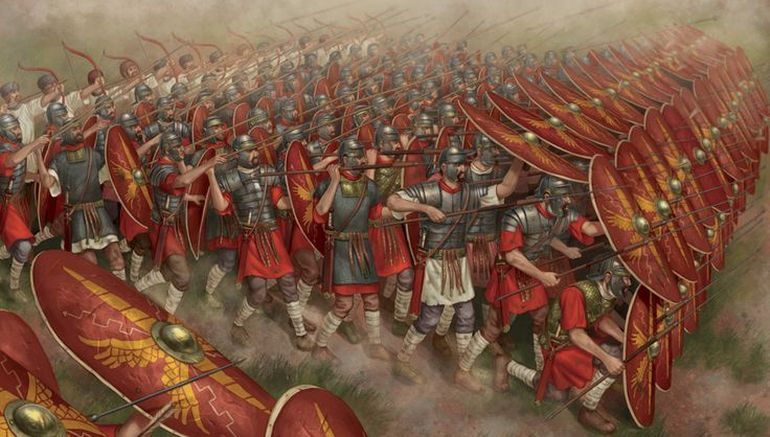I see many complaints about stereotypical fantasy races. You know the ones—elves who sing to the birds and can shoot the wings of a fly from three hundred yards away, blindfolded.
And, of course, the beardy dwarves who heft axes bigger than their bodies and defy sadistic dragons for a bit of gold.
So in this guide, you can find a detailed exploration of the three most common races—elves, orcs, and dwarves.
We look at their classic tropes and debate what we as writers ought to do: re-use, recycle, or rubbish them.
We’ll also take a look at some other examples of fantasy races, ways to create our own, and the answers to some key questions, like copyright law and using the creations of other authors.
Choose A Chapter
- Examples Of Common Fantasy Races
- Should You Use Existing Fantasy Races?
- How To Create Fantasy Races
- More Guides On Fantasy Races
Examples Of Common Fantasy Races
Below, you can find examples of some common fantasy races. Many of them stretch back to the stories of JRR Tolkien which graced bookshelves in 1954/1955.
However, Tolkien took inspiration from stories that came much earlier, such as orcs and Beowulf (in which they were called orcus).
Other books and in this case games have developed classic fantasy races even more so, such as Dungeons and Dragons (DnD) and Warhammer. Some forms of fiction embrace the classic fantasy cliches and tropes; others go their own way. Let’s look at some examples.
Elves
- Perhaps the most popular of all the fantasy races.
- About the same height and appearance as humans, though sometimes smaller or taller. They have ears like Spock’s with varying pointiness. And are usually beautiful to the point of perfection.
- Often found in woods, forests, or tree cities.
- Usually about 10,000,000 years old.
- Can come in various sub-races, such as high elves, dark elves, wood elves. High elves tend to be more competent at things such as magic and fighting, an all-round ‘superior’ being. It’s not some kind of stoned elf who’s always ‘sniffing flowers’. There’s a gap in the market there. Wood elves are a little more grounded than their ‘high’ cousins. They’re sometimes portrayed as jovial, open-minded folk, and other times as secretive and fiercely protective over their land and kin. Dark elves are the goths of their kin, rejecting the trees and plants and anything happy. They want to corrupt the world with the depressing virus that riddles them.
- Always carries some kind of bow which they can shoot anything from any distance with. Why not shoot three arrows at once while you’re at it.
- Can possess some kind of magical ability, such as superior vision, or a greater handling of magic.
- Very spiritual beings, but with a tradition of fighting. Their warriors seem to have a reluctant air to them like they wouldn’t be doing this if it wasn’t for some arsehole killing everyone.
- Usually ruled by some semi-divine individual, such as an elder or queen. Elf kings can be quite hard to come by.
- Perhaps a tad racist? They don’t care much for dwarves.

Orcs
- The word orc comes from an old English word—orcus—which referred to a type of monster or demon (you can check out my demon name generator here), though the Roman God of Death was named Orcus which could also have an influence. They first featured in the epic poem Beowulf, one of Tolkien’s greatest influences. Check out Tolkien’s lecture essay, Beowulf: the Monsters and the Critics. Tolkien’s version of the orc has had the most lasting effect on the fantasy genre, so it’s this type of orc we’ll focus on.
- The perennial bad guy. Humanoid, grotesque and dirty, they usually make up the ranks of whatever evil force is at work. There is an element of fear behind why they serve.
- They tend to have sickly coloured skin, from greens and greys and even reds. Their appearance is boar-like, with tusks and snouts.
- They have a ferocious attitude, somewhat mindless. Portrayed as stupid, but that’s misleading. They can craft fantasy weapons and armor and treat injuries.
- The strongest orc tends to be the leader, though the position is often subject to challenges.
- They love ‘man flesh’ and don’t appear to put much effort into cooking it. They’re known to eat each other too.
- They loathe humanity with a burning passion.
- Hang around with other brutish creatures, like wargs or toothy dogs.
- Tend to live in caves or hovels in tribe-like communes.
- Maybe the least popular of all fantasy races, and certainly the ugliest!

Dwarves
- Dwarves are arguably the quirkiest of fantasy races.
- The modern fantasy idea likely stems from the dvergar of Norse mythology. They were said to have been as old as the gods themselves.
- In high fantasy, the modern dwarf was first introduced in The Hobbit. Brave and fierce, they were artisans and warriors, small and stout, rooted in tradition. And above all, they love a bit of coin and anything shiny or precious.
- They stand at a comfortable height to knee in the face.
- They can’t get enough of mining and making weapons and armour.
- Usually ruled by a warrior-king.
- Female dwarves don’t feature much. In Lord of the Rings, it was said dwarf women look like their men.
- Usually carry either an axe, swords, mattock (a weaponised version of a pickaxe), or a hammer.
- Tend to live in caves or cities built alongside or within mountains, or Viking-like communes with huts and longhouses.

Should You Use Existing Fantasy Races?
It’s often debated in fantasy writing circles whether or not you should create your own fantasy races or whether or not you can re-use what’s already been created.
In this section, we’ll consider this debate in more detail. But first, let’s explore issues of copyright surrounding the races found in the fantasy genre.
Are fantasy races copyrighted?
The rule when considering general fantasy races, like dwarves and elves, is that they’re not copyrighted. This means that you’re free to use them without any fear of being sued.
As we’ve mentioned already, some of these races stretch back hundreds if not thousands of years and originate in mythologies and folkloric tales, some of which nobody knows the author of.
Here are some other races that you can use:
- Dragon
- Unicorn
- Elf
- Goblin
- Wargs
- Demons
- Ogres
- Trolls
There was a case brought by Middle-Earth Enterprises (Tolkien’s estate) against the makers of Dungeons and Dragons a few years ago. Tolkien’s crew demanded they remove species and races such as hobbits, ents and balrogs, as well as elves, dragons and dwarves, which featured in early versions of their game.
The court ruled that Middle-Earth Enterprises had no basis to demand the removal of more historic races like dragons and elves, but they did have valid grounds to argue for the change of hobbits, ents and balrogs.
So as we can see here, if copyright law is in place with respect to a story, novel or creation by an author, they can exercise that legal protection against someone who copies it.
This rule applies to unique fantasy races, like balrogs.
In short, if it’s a classic fantasy race, you should be fine. If it’s something newer and more original to an author, you may get challenged. I always say it’s better to be safe than sorry.
Re-use: why deviate from the tried and tested?
I enjoy reading stories featuring elves and dwarves and orcs. I don’t read many of them, though. For those that do it can grow a bit tiresome, almost as if you’re reading the same book over and over.
In the original version of my short story The General, I had elves. It felt like I was cheating, that I wasn’t really pushing myself to create. It’s my story after all, why use someone else’s idea? But I like elves. They’re mysterious and good-natured and awesome with bows.
And that’s the point. Despite the odd complaint, we still love these classic races. They’re part of the reason we fell in love with fantasy. We enjoy the tropes that continue to enchant us. Dear old Gimli will forever hold a place in my heart.
Recycle: finding originality in a sea of lookalikes
A lot of ideas have been taken. If you can, unshackle your mind, go wild with that plasticine trope in your mind. Morph it into all manner of shapes. Create the appearance then think about the classic traits and how you can alter them. Start at the opposite end and work back from there until you find a level you like. Whatever you create is going to be different and unique because you created it.
This is what I decided to do for The General. I took the elf template and came up with the Vysi. They’re smaller than humans, with eyes three times the size and giant ears the shape of a mouse’s. I kept that elvish connection with nature I love so much, but even with those slight changes I found that readers appreciated the effort and difference. It gave them a new experience, which is what we seek in stories.
Rubbish: starting from scratch
It’s no easy feat coming up with an entirely new race of people. Especially when so many have been done. We’ve seen lizards and the Tsuranuanni in Feist’s works. Adrian Tchaikovsky has a whole world full of unique races with affinities to different insects, such as beetles, wasps, mantids and spiders in his Shadows of the Apt series.
It’s certainly possible to come up with your own. Unfortunately, I can’t offer much help on that front, it’s down to you, but I can suggest how to start. Pick a template—appearance and traits—alter bits and pieces, and just keep on doing that until you’re happy you’ve made something different.
How To Create Fantasy Races
One of the beneficial sides of looking at fantasy tropes, stereotypes and cliches is that it gives us the ability to create our own fantasy races. By looking at the tried and tested, we can find untapped angles, or take one or more stereotypical angles and twist them on their head.
This is something I did with Pariah’s Lament, my debut fantasy novel. I knew I wanted a unique and original fantasy race to feature in the story, but I didn’t want to go down the stereotypical route (despite my love for these stereotypes). Instead, I toyed around with their appearance while being conscious of their surroundings and came up with the amphibian-looking Amast.

This effort seems to have worked. Reviewers and readers have consistently commented on how much they love the Amast and how they want to know more about them.
Another way in which I’ve tried to skew the typical fantasy race tropes is with a new set of stories centred around my own incarnation of orcs. As we’ve seen above, orcs don’t deviate much in their appearance and demeanour. They’re nasty bastards through and through.
I quite like that about them, though, but I wanted to make them formidable. Rather than the orcs in Lord of the Rings that were cut down in their hundreds, I wanted to flip it and have them truly tough foes to defeat, even for the greatest heroes.
Again, feedback on this has been good so far! You can even read one of my stories featuring my own take on orcs by joining my community of readers and writers.
How many fantasy races is too many?
This is a question I often see get asked, but it’s one I find hard to answer.
The biggest reason for this is that when I look at my favorite fantasy tales, they’re packed with all different types of races.
Lord of the Rings, for instance, has seven main fantasy races: Men, Elves, Hobbits, Dwarves, Orcs, Ents and Trolls. There are also spirits called the Valar and Maiar. There are more than this, however, with the likes of balrogs and offshoot races like goblins.
None of that jarred for me, and I think it’s because they’re sufficiently distinct and unique. Tolkien achieved clarity.
And I think this is the best bit of guidance I can give—include however many fantasy races you need before things become convoluted.
If in doubt, strive for clarity. After all, if the reader can’t fathom what’s going on in the story, they’re not going to stick with it.
So if, for example, your story has four variations of dwarf, with subtle differences between each, some readers may get frustrated if they can’t differentiate between each one.
How to name fantasy races
Coming up with unique names for your fantasy races can be tricky. Few reference points are original and unique.
And then we have to contend with reader expectations and reference points. For instance, if we call something an orc, readers may have certain expectations of what they’re like.
To help you come up with some truly unique and original fantasy race names, check out my free name generator tool.
It also comes with a handy guide that offers tips and advice on creating fantasy names.
So if you need a hand knowing how to name fantasy races, just click below.
Click Here To Use The Fantasy Race Name Generator
More Guides On Fantasy Races
Thank you for reading this detailed guide on how to create fantasy races. Below, you can find some further guides you may find useful:
- What is characterization?
- Fantasy worldbuilding – a complete guide
- Learn more about the fantasy races that JRR Tolkien came up with
- How many fantasy subgenres are there?
- Learn how to write fiction with the University of Oxford
- More about the centre for fantasy and the fantastic
- Mastering Dialogue: The Very Best Tips - January 12, 2024
- The Proven Method Of Writing Short Story Cover Letters - November 10, 2023
- Tips, Advice And Guidance On Writing Villains And Antagonists - November 7, 2023



